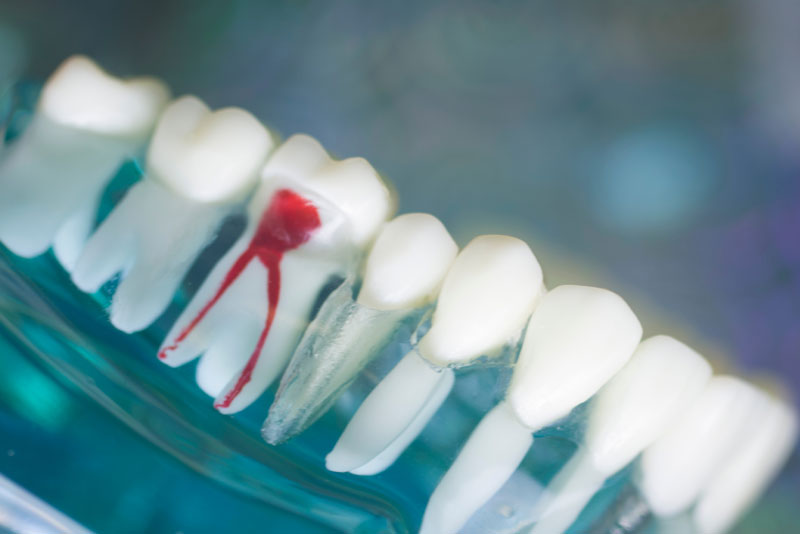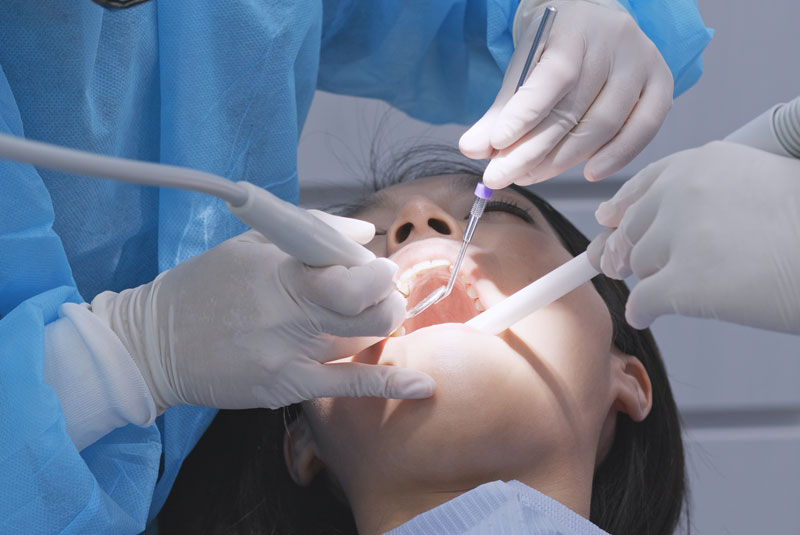


Before the procedure begins, the area is completely numbed using a local anesthetic. Once the area is numbed, a rubber dam is placed around the infected tooth to protect the mouth and to prevent anything from falling into the back of the throat. In order to access the infected tooth pulp, your doctor makes an opening through the top of the tooth to get down into the pulp chamber. A tiny instrument, called a dental file, is then carefully used to clean out the infected tissue and to shape the root canals to receive the filling material. X-rays will be taken to ensure that all of the infected pulp is removed before the filling is placed and to confirm that the filling material reaches the ends of the canals in each root. After the infected pulp is removed, the restoration is placed. In most cases, a crown is placed to protect and strengthen the tooth. However, if the tooth is severely broken down, it may be necessary to start by building up the tooth with a post and core.
